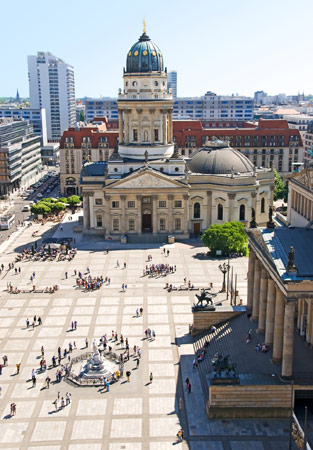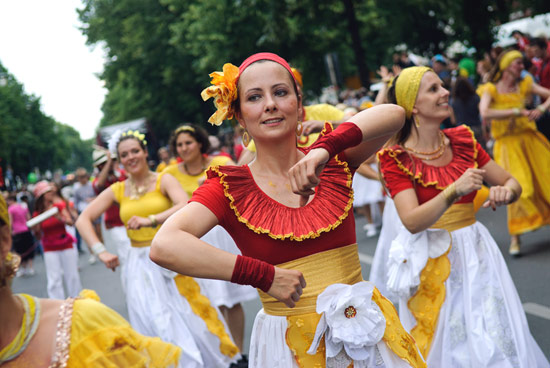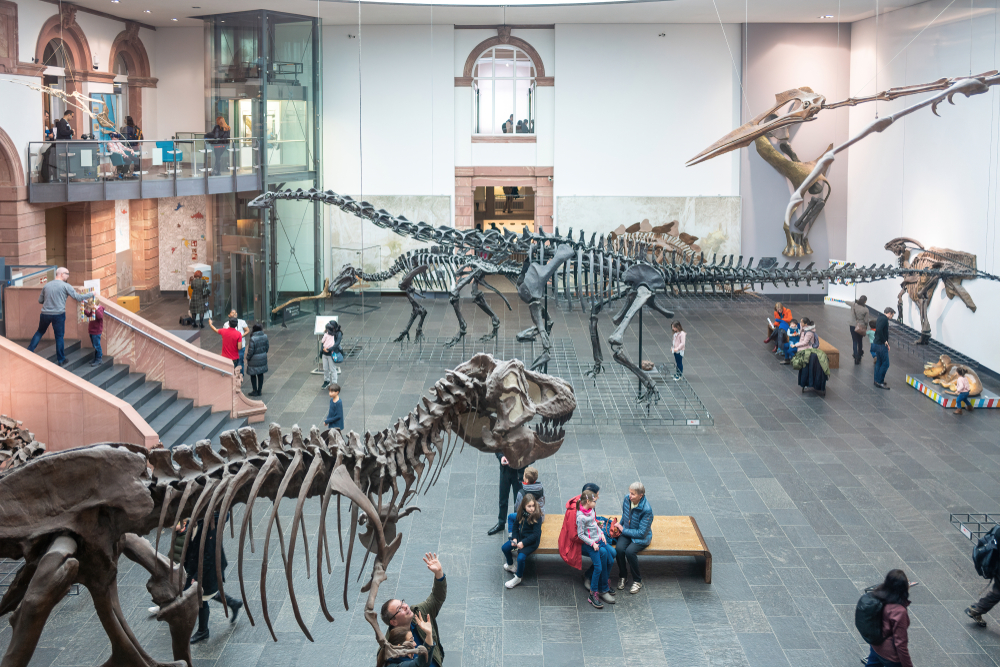Country Snapshot: Country Snapshot
Land/Geography/Regions
Located in north-central Europe, Germany has coastline on the North and Baltic seas as well as the Alps mountain range along its southern border. The country’s varied geography includes marshes called the Northern Lowlands that stretch its northern sea region. This area gradually rises to the Central Uplands, which cover most of the country with both rolling plains and forested regions. In the south are the Alpine Foreland and dramatically scenic Alps, the highest and most extensive mountain range lying entirely in Europe.
Germany, comprised of 16 states, has the second-largest population in Europe and borders nine countries: Denmark, Poland, Czech Republic, Switzerland, Austria, France, Belgium, Luxembourg, and the Netherlands. The Rhine River flows northward through western Germany from its origins in the Swiss Alps, defining the country’s Rhineland. One of Europe’s major rivers providing transportation between northern and southern Europe for centuries, the Rhine is a large part of Germany’s cultural and national identity, inspiring art, songs, and literature.
People and Culture
The majority of the country is made up of ethnic Germans. Their ancestry includes ancient Celts of northern Europe, a powerful tribe who lived in the region from 730 to 12 BCE, and Slavs from eastern Europe. A small portion includes Turks, Greeks, Italians, Poles, Russians, Serbo-Croatians, and Spaniards. Though once its largest ethnic minority, the country’s Jewish population was drastically reduced during the Holocaust of World War II. German is the official language of the country, with three dialects spoken regionally from north to south. Many other languages are spoken in Germany’s large cosmopolitan cities.
The German population sees almost equal portions practicing Catholicism and Protestantism, with Lutheran the majority non-Catholic religion. Various other religions include Evangelical Methodist, Calvinist, Judaism, Islam, and Eastern Orthodox Christian.
Amidst Germany’s 20th century growing pains arose the cultural movements of Modernism, Expressionism, and the Bauhaus school, reactions to feelings that old traditions were lost, and a new path forward was needed. Among the country’s many cultural contributions is the music of Wagner, Bach, Beethoven, and Brahms, and the writings of Franz Kafka, Thomas Mann, and the Brothers Grimm.
Noted characteristics of German culture include a private and stoic nature, prioritizing structure, honesty, and hard work. A distinguished beer culture is celebrated in outdoor biergartens and during Oktoberfest.
History
The land that became modern Germany was occupied as far back as 3,000 years ago, with many tribal cultures living in and around the region. These included the Celts of northern and central Europe, and Slavs to the east. The name Germany stems from the term Germania, which was bestowed by the Roman Empire and referred to the area east of the Rhine and north of the Danube rivers. The Roman Empire worked with several tribes through peace treaties, trade, and diplomacy. The tribes remained distinct following a united and successful battle against the Romans in 9 CE, after they failed to successfully tax and subjugate tribes and extend their reach into tribal territory.
The eventual decline of the western Roman Empire by 476 CE saw German tribes remain independent and powerful. It was Charlemagne, aiming to convert the region to Christianity, who eventually conquered the land by the late 8th century. Despite this semblance of unity, Germany continued to fight internally with many wars occurring among the region’s various princes. Martin Luther, a German friar and theology professor, further divided the country along religious lines in 1517 when he published 95 Theses highlighting the corruption of the Roman Catholic church. The resulting Protestant Reformation—aided by the printing press to spread the message—led to one of Germany’s most devastating events, the Thirty Years’ War. During this time, approximately 8 million people died from the conflict as well as plague and famine. This number constituted 20 percent of the German population.
The Reformation set off social and political unrest that had been brewing between peasants and landowners, and Germany underwent a period of reform on those fronts. Simultaneously, the world’s rulers struggled between conflict and alliance, and for hundreds of years Germany continued to function within various small political units until the French—led by Napoleon—took control of the country. Dominated by a foreign power once more, sentiments of nationalism grew. Seeing the advantages of uniting its divided powers into one strong nation, Germany entered a decisive battle against Napoleon’s forces and was victorious in 1813. Soon after, Europe’s ambassadors convened at the Congress of Vienna to determine a peaceful path forward, during which Germany was organized into 39 states called the German Confederation.
Additional events shaping the course of German history include World War I. Despite the country ending up on the losing side and forced to pay reparations, the war fostered a sense of unity around the perceived injustice of the Treaty of Versailles. Following this, Germany forged a new, democratic constitution focused around a representational government that, despite its founding ideals, fostered a radical right wing dissatisfied with the country’s final moves during WWI. This radical political wing also suspected a conspiracy of Jews to control the world, and World War II’s end result—the genocide of millions of Jews and murder of other minorities by the oppressive Nazi regime under Adolf Hitler—showed the extent of widespread racism and resentment brought to Germany following WWI.
The country had landed on the losing side of a world war yet again, and WWII’s winning Allied powers split defeated Germany into east and west. The west lived under democratic ideals that brought a flourishing economy, while the east languished under Russia’s communist principles. The literal division of Germany lasted until 1989 when the Berlin Wall fell, and the end of the 20th century and beginning of the 21st finally brought about the prosperous and unified European country that had eluded Germany for thousands of years.
Climate and Biodiversity
Germany’s climate is overall temperate, though seasonal variations are commonly influenced by cold air masses from the east and the warming influence of the North Atlantic Drift ocean current. In general, summer tends to be cool and wet, with autumn a windy and wet season as well. Winters are occasionally cold and snowy, with January the coldest month, though in general winter is a relatively mild season. Regional variations exist, particularly in the country’s southern mountainous region. This area experiences harsh winter conditions with heavy snow and extreme cold. A warming valley wind arriving in the spring spurs the season’s thaw. Coastal regions experience Atlantic storms and quickly changing weather, and the east sees low rainfall and extreme temperatures in both summer and winter.
Germany’s diverse landscape includes forests, mountains, rivers, and marshes, all which support various flora and fauna. The country’s national flower is the cornflower and it grows wild throughout Germany. Other common plants include chamomile and green spire, with the silver birch and Norway spruce being the most prevalent trees.
Many species are nearing a threatened state due to several factors such as human activity, natural disasters, and climate change. There are tens of thousands of plant and fungi species, as well as insects, in Germany. Fish and bird species have the most variation, with native bird species including the bean goose, boreal owl, and pied avocet. The country also has some unique native animals like the fire salamander, European pine marten, and chamois. The meat of these goat-like antelopes is considered a delicacy in Germany.
Economy
The German economy is the largest in the European continent and fourth largest in the world. Major industries include machinery, vehicles, and chemicals, which also are among the country’s top exports. Other major exports are electronic products, pharmaceuticals, basic metals like iron and copper, food products, and rubber and plastics.
The German economy is referred to as a social market economy, also known as a mixed economy. This allows a free market for consumer goods and services, with the government imposing regulations in those arenas to protect citizens. Those making higher incomes pay higher taxes, with the government providing education and health care insurance.
In 1958, West Germany was a founding member of the European Community, the forerunner to the European Union (EU). This is a group of 28 member states located primarily in Europe that have a united, internal market, organized by a system of laws. The purpose of the EU is to ensure the free movement of people, goods and services, and capital within its internal market. The euro is the official form of currency in Germany and the eurozone, which is comprised of 19 EU member states.
Government
The government of Germany is a democratic, federal parliamentary republic. There is a legislative, executive, and judicial branch, and the capital is Berlin. The president is the formal chief of state and serves a five-year term with the power to appoint federal judges as well as nominate a federal chancellor and the chancellor’s cabinet. It is the chancellor who heads the government and initiates government policy.
The country’s legislative power is held by its parliament, which is comprised of upper and lower houses called the Bundesrat and Bundestag, respectively. The Bundesrat is the representative body of the country’s 16 states, though it is the Bundestag that has wider powers and initiates legislation. The court system sees state courts handling trial and appellate cases, while the federal courts have final say. The Federal Constitutional Court is the only court that can declare legislation unconstitutional. Germany’s constitution emphasizes individual liberty—with an extensive section on human and civil rights—and the division of powers among its governmental branches as well as between the federal and state levels.
Article written for World Trade Press by Felicia Topp.
Copyright © 1993—2025 World Trade Press. All rights reserved.

 Germany
Germany 




